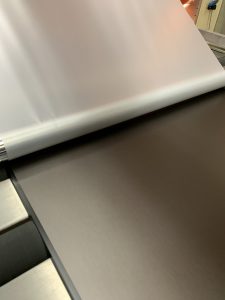Anyone who uses laminating services will likely tell you they are well worth the money. People want to protect their items as much as possible. This can be for business or sentimental reasons. Whatever the case, lamination gives the goods the protection they need. We can provide first rate solutions here because we have the best experience.
People sometimes get confused with all the finishes that you can apply to print materials. Not understanding what the right one is can lead to issues. Therefore, it is essential that you know precisely what it is you require. To help, we are going to discuss the differences between varnishing and laminate. These are two things that are easy to confuse.
Varnishing
Varnishes are liquid coatings that you apply to the exterior of an item. You can also call them sealings or coatings. Usually, people use them to stop scuffing or rubbing, as well as on coated stock. Print or standard varnish is a clear coating that is processed not unlike ink in presses. The composition has similarities to ink too. However, there is zero colour pigment. There are two forms – varnish and UV coating.
With UV coating, it can be matte or gloss. You can employ it as an overall flood coating or a spot covering to accent a certain image on your sheet. It comes with more protection in comparison to other varnishing options. However, recycling any items with it is more challenging.
As for the normal varnish coatings, they come in matte, satin, or gloss finishes. They come with a relatively low level of protection if you compare to different laminates and coatings. You apply varnishes just like ink, utilising one of the press units. It is possible to either spot apply varnishes right where you need to or flood them over the whole sheet.
Laminates
 As for laminating services, they are transparent, thin coatings or plastic sheets. Typically, you apply them to post cards, covers, and similar objects. They offer protection against heavy use and liquid. Also, they tend to accent existing colours, providing a high gloss effect.
As for laminating services, they are transparent, thin coatings or plastic sheets. Typically, you apply them to post cards, covers, and similar objects. They offer protection against heavy use and liquid. Also, they tend to accent existing colours, providing a high gloss effect.
Laminate can come in two forms – liquid and film. These products can have a matte or gloss finish. As the names state, in one instance, you lay a clear film of plastic over your paper sheet. In the other you spread a clear liquid over an item and then give it time to dry similar to varnish.
The thing to keep in mind is that laminating can offer superior protection against water, making them perfect for book covers, menus, and the like. They may cost a bit of money, but the strong, washable surface is well worth it.
We understand how laminating services work
At Foiling Services, we treat our clients’ items with complete respect when they ask us to apply films or foils. We start by understanding an object’s qualities and the laminating goals. We then decide what approach would be the best to use. In the end, we aim to deliver first class results.
So, if there is anything we can do for you, please give us a call. Our laminating services are first rate, ensuring they are great for all kinds of sheet materials. For example, we can work on various marketing products and even things like furniture and composite doors.
